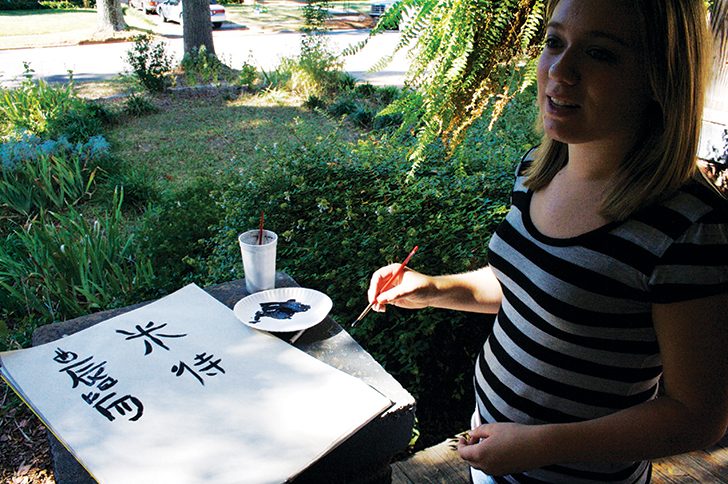Shodo (the way of writing) or Japanese calligraphy is the art of writing beautifully and is practiced by children and enjoyed as a hobby among adults as well. Japanese writing was largely influenced by Chinese writing until the development of the unique hiragana and katakana, whereupon Japanese calligraphy developed into it’s own unique style.
Prior to the development of the Japanese style, the most revered calligrapher in Japan was Wang Xizhi and although all of his original works have been lost, copies of some such as the Gakkiron by Empress Komyo show his influences. The Hokke Gisho is believed by some to be the oldest text in Japanese; this annotated commentary on the Lotus Sutra was believed to be written in 615 by Prince Sho ‘toku. Written in 749, the Soukou Shujitsu is widely regarded as the first text written using the unique Japanese calligraphic style. While the early Heian period saw the style develop, the Chinese influence remained strong with Chinese calligraphers finding favor with royalty and the aristocracy.
Unlike the Roman alphabet, the strokes of Japanese characters must be written in a certain, specific order; they cannot be written randomly and are drawn one at a time, resulting in a squared, boxy style known as Kaisho. For everyday use, Kaisho is impractical and slow and two more relaxed styles similar to western styles have been developed; Gyosho, or the semi-cursive and the Sosho, the cursive. Gyosho retains some of the straight lines and stroke order of Kaisho, where the flow of the lines in the Sosho style, while very aesthetically pleasing, is nearly illegible even to Japanese.
The how-to of Shodo starts with Hanshi/Washi, a type of traditional Japanese paper that is made by hand and is generally stronger than ordinary paper and is used extensively in Japanese arts. Shodo is written with a fude, or brush made from animal hair and bamboo, although for everyday writing, mass-produced pens with an oversized, brush-like tip are commonly used. Calligraphy ink is called Sumi and is derived from charcoal and is in stick form. The stick must be mixed with water on an ink stone until the right consistency is reached. Cheaper, pre-mixed bottled inks are available but they are mainly used for practice as they have a tendency to bleed or fade over time. Procedure is everything in Shodo and learning to mix the ink properly is an important element of Japanese calligraphy and is studied carefully. It is worth noting that Shodo is written almost exclusively in black ink, although some modern Shodo practioners do use colored inks. Shodo teachers use bright orange ink for demonstrating characters and correcting student’s work and finished pieces are generally signed in red ink. In addition to the above tools, a piece of felt known as a Shitajiki is placed under the paper to give a soft writing surface and weights are also used to hold the paper securely.
To properly learn shodo one will need years of practice; not only is correct stroke order vital, but rhythm and character balance is important as well. A skilled calligrapher is able to handle the brush to produce an aesthetically pleasing balance using a blend of both thin and thick lines and light and dark inking. In addition to the skill needed for the brush, many kanji characters must be learned; where there are only 26 letters in the Roman alphabet, there are upwards of 40,000 kanji that can be used. Inspirational or hopeful characters such as “love”, “happiness” or “rich” are often used as home decorations or as gifts.
Today, calligraphy is a standard elementary school subject and is offered as an art option in high school along with music and painting. Some Universities have special departments offering programs in calligraphy. For those wanting to try shodo, community centers, ward and shi offices, festivals and occasionally some high schools offer one-time chances to try it out. For those serious about studying shodo, there are many shodo schools in Japan and once the basics of are learned, there is no end to the amount of self-study and practice one can do at home.
Story by James Souilliere
From J SELECT Magazine, July 2008















Recent Comments